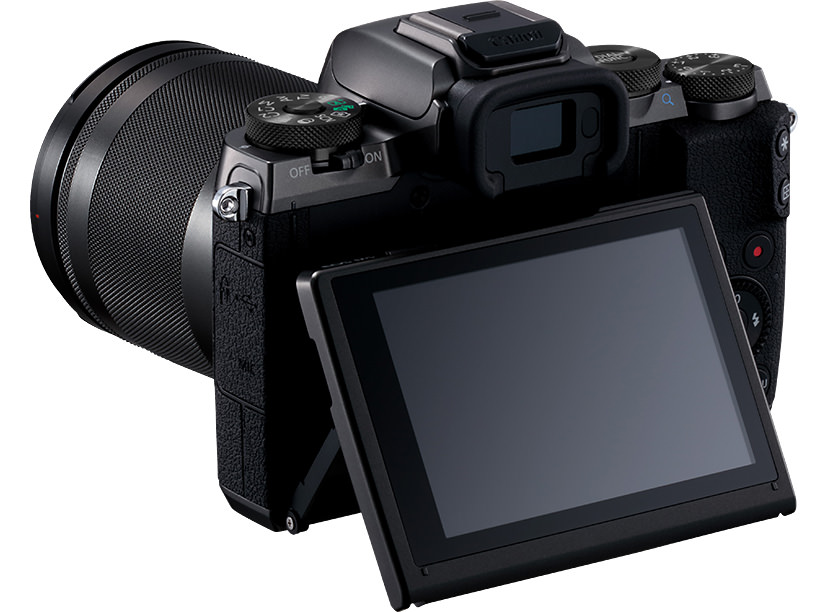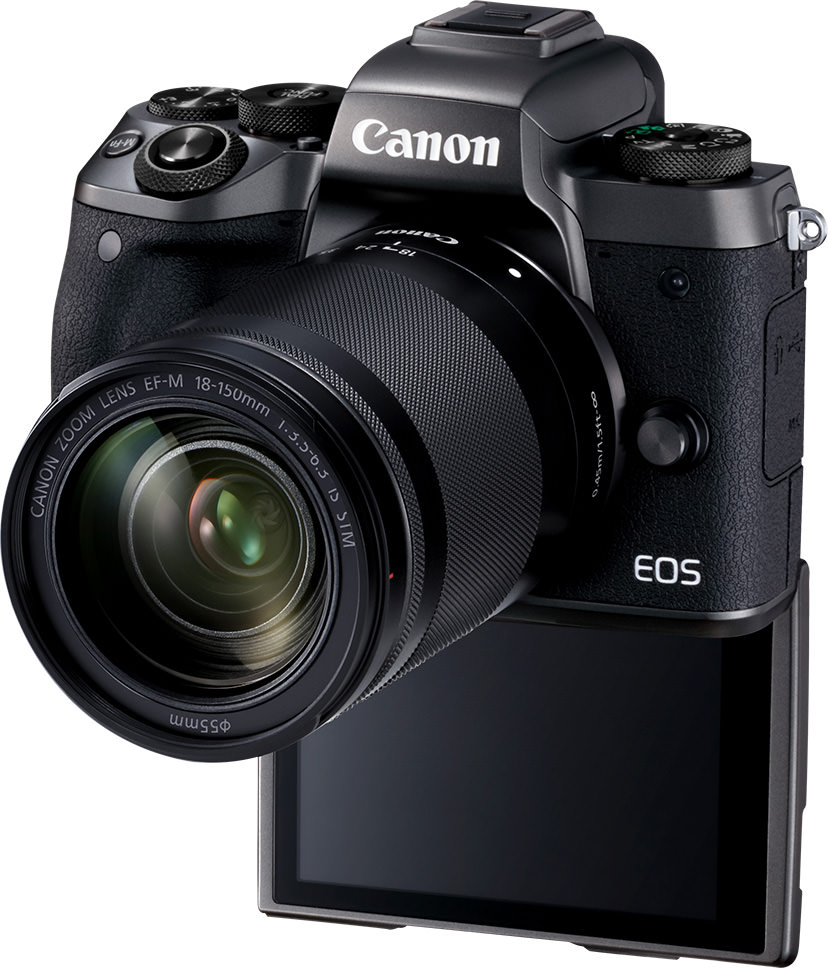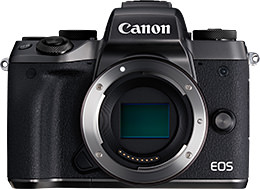Canon announced its top-of-the-line mirrorless camera, the EOS M5, on 15 September 2016. Designed with ease of use in mind, the camera is equipped with a built-in electronic viewfinder (EVF), which was an external attachment on the previous models in the EOS M series. Improvements have also been made to operability, the view on the rear LCD monitor, the image quality in low light and the AF performance. (Reported by: Makoto Suzuki (Digital Camera Watch))

First Canon mirrorless camera to be equipped with Dual Pixel CMOS AF
The most prominent feature on the EOS M5 is its inclusion of the Dual Pixel CMOS AF system, a first for a Canon mirrorless camera. With this system, each pixel consists of two photodiodes, each of which provide phase difference detection information which is then used to carry out autofocusing (AF). While the EOS M3 made use of contrast AF and Hybrid CMOS AF III at the same time, on the EOS M5, autofocusing is carried out only with image plane phase difference detection.
Click here for more details about Dual Pixel CMOS AF
The EOS M5 continues to use an APS-C format image sensor just like previous EOS M models, with 24.2 effective megapixels and a maximum ISO speed of ISO 25600. The image processor, however, is DIGIC 7—the first time it is being used on an EOS camera. During movie shooting, 5-axis image stabilization is supported (further enhanced if you use any of the two Combination IS-compatible lenses), as is recording in formats as large as Full HD 60p.
The fastest shutter speed possible is 1/ 4.000 second; the fastest synchronized shutter speed with flash is 1/200 second. The camera is equipped with a built-in pop-up flash.
Other features include diffraction correction, which improves the visual resolution of photos shot with a large aperture (such as pan focus shots); for the first time on an EOS camera, an in-camera RAW image processing function that can carry out simultaneous processing of multiple RAW images; and a Panning function which automatically adjusts shutter speed in line with camera panning speed.






Touch & Drag AF enables convenient AF operation during EVF shooting
Continuous shooting is possible at up to approximately 7 fps with AF tracking (up to 31 shots at a constant continuous shooting speed), and up to approximately 9 fps with AF lock (up to 26 shots at a constant continuous shooting speed). As many as 1000 continuous shots are possible.
The AF tracking function is based on the subject tracking AF system used in EOS DSLR cameras, which supposedly are able to carry out tracking not just for movement in a horizontal or vertical direction, but also on subjects moving towards or away from the photographer. A ‘Small” frame size has also been added to the existing sizes to enable pinpoint focusing.
The built-in EVF has approximately 2.36 million dots and a 22mm eyepoint, and comes with the new Touch & Drag AF function, which allows users to select and move AF points through touch screen operation, even as they look through the EVF. The function also incorporates Smooth Zone AF, where the user can choose several AF frames to be activated, making it easier to capture a clear, in-focus picture of a fast moving subject. Touch & Drag AF is highly customizable—you can turn it on or off by pressing the ON/OFF button at the front of the body, and even programme the area in the LCD monitor where touch operated AF is effective.
The LCD monitor is a 3.2-type with approximately 1.62 million dots of effective pixels, and is tiltable up to 85 degrees upwards and 180 degrees downwards.



An assortment of dials and buttons that allow for easier camera operation
A new function has been added to the assortment of dials and controls. There are three main controls—the Main dial, which rests around the shutter button and controls basic functions; the Quick Control dial which allows you to quickly access and adjust settings for aperture, shutter speed and ISO speed; and the Control dial, which makes image playback operations easy and is located next to the rear LCD screen.
It is possible to customise the functions of the Quick Control dial using the [DIAL FUNC.] button positioned on top of the said dial. By doing so, you can select the parameters you would like to adjust by operating the Quick Control dial, such as ISO speed, white balance and so on.




Supports Bluetooth low energy technology, allowing long duration remote camera control
Bluetooth low energy technology has been newly employed as one of the modes for pairing with smartphones. The devices will apparently be automatically connected when you switch on the function, and a constant connection is possible—a promising feature to have for situations such as controlling shutter operations during long exposure photography. The EOS M5 also supports remote shooting in Live View via NFC/Wi-Fi connection.
The battery used is Battery Pack LP-E17, which allows up to 295 still image shots to be taken in a single charge.
External dimensions are approximately 115.6×89.2×60.6mm (Width × Height × Depth). The camera weighs approximately 427g (including battery pack and memory card) and 380g (body only).

Body jackets and neck straps are also available (sold separately).

Receive the latest updates on photography news, tips and tricks by signing up with us!

EOS M5 (Body)

Delivers daily news related to topics such as digital cameras and peripheral devices, and imaging software. Also publishes articles such as reviews on the use of actual digital camera models and photo samples taken using new models.
































